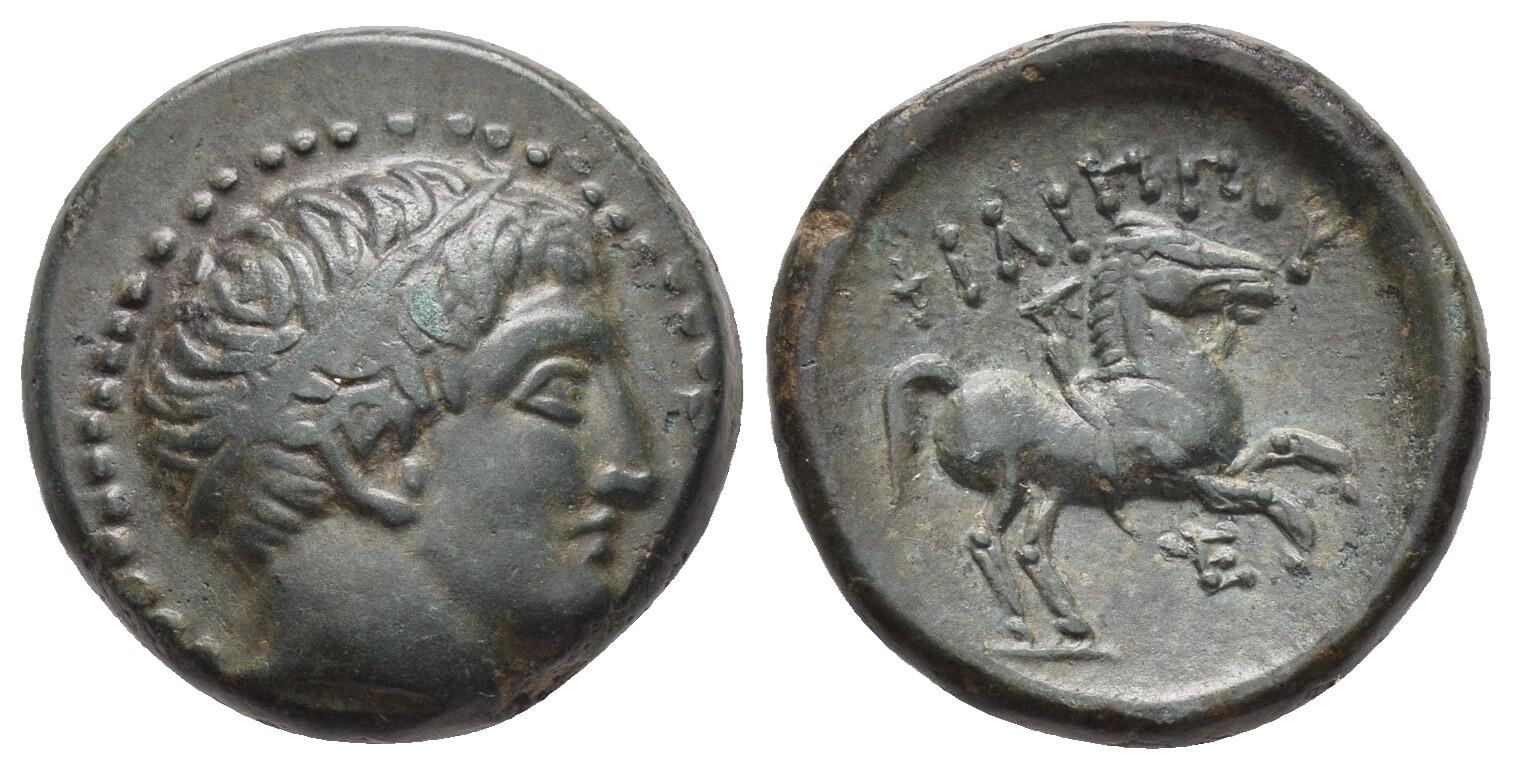309 BCE - 275 BCE | ΣΕΥΘΟΥ
Overstriking coin
SO 441 - Seuthopolis over uncertain mint.jpg
Overstruck variety
Philip_II_bronze_Apollo_rider.jpg
[1]
|
|
Sale(s)Sale(s) ᵖ:
|
Aegean Numismatics, 1 Dec. 2016, 29
|
|
|
|
Description
| ObverseInscription or printing placed on the obverse.:
|
Male head (Zeus? Seuthes?) right, wearing laurel wreath.
|
ReverseInscription or printing placed on the reverse.:
|
ΣΕΥΘΟΥ (Greek) Horsman riding to right. Below, symbol.
|
Mint and issuing power
Chronology
| FromIdentifies the initial date in a range assigned in a numismatic context. 309 BCE toIdentifies the final date in a range assigned in a numismatic context.. 275 BCE
|
Hellenistic 323-30 BC  periodTime period of the numismatic object. periodTime period of the numismatic object.
|
Physical description
MetalThe physical material (usually metal) from which an object is made.: Bronze 
|
WeightWeight of the numismatic object (in grams). in grams: 4.214.21 g <br />4,210 mg <br />
|
|
|
| DiameterDescribes diameter of an object (in mm).: 1919 mm <br />1.9 cm <br />
|
|
References
Description
| ObverseInscription or printing placed on the obverse.:
|
Head of Apollo, wearing laurel wreath (visible on obverse).
|
ReverseInscription or printing placed on the reverse.:
|
BAΣΙΛΕΩΣ ΦΙΛΙΠΠΟΥ (Greek) Naked youth riding horse right, holding reins (visible on reverse: legend)
|
Mint and issuing power
Chronology
| FromIdentifies the initial date in a range assigned in a numismatic context. 359 BCE toIdentifies the final date in a range assigned in a numismatic context.. 317 BCE
|
Classical 480-323 BC  periodTime period of the numismatic object. periodTime period of the numismatic object.
|
Physical description
References
| Frequency of overstrikesFrequency of overstrikes:
|
frequent
|
Level of confidenceLevel of confidence of the identification:
|
sure
|
| RemarksRemarks:
|
"However, a more careful eye will note that the undertype is not a regular Philip II issue at all, but rather it is a satrapal bronze of Lysimachus"
|
References
- ^ Sear, David R. (1978), Greek coins and their values. Vol. I, Europe, London, xl, 316 p.
- ^ Sylloge nummorum graecorum. Great Britain. Volume 11, The William Stancomb Collection of coins of the Black Sea Region, Oxford, 2000, liii p. of plates, map ; 31 cm.
- ^ Hoover, Oliver D. (2017), Handbook of Coins of Macedon and Its Neighbors. 3. Part 2: Thrace, Skythia, and Taurike, Sixth to First Centuries BC, Lancaster-London, xix, 232 p.
- ^ Hoover, Oliver D. (2016), Handbook of coins of Macedon and its neighbors. 3. Part I: Macedon, Illyria, and Epeiros, sixth to first centuries BC, Lancaster, 437 p.


